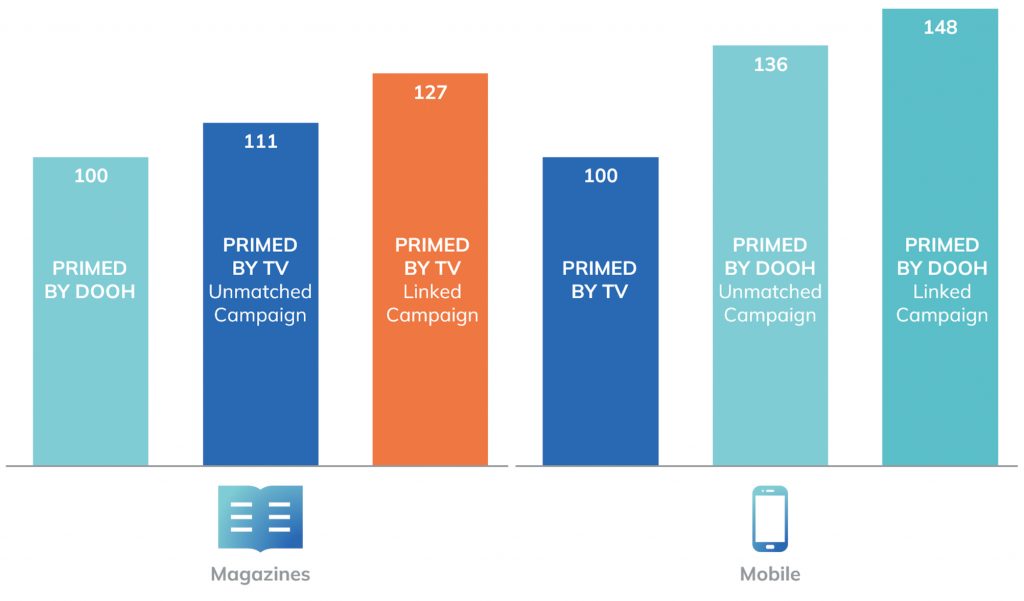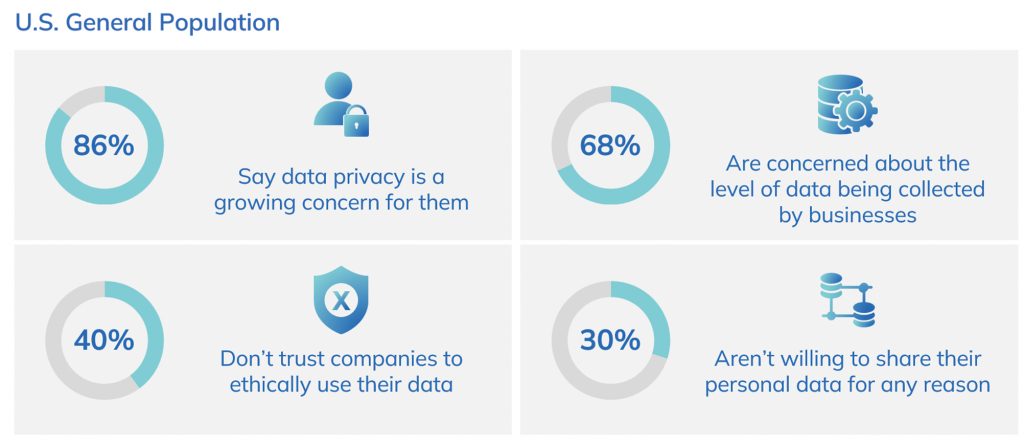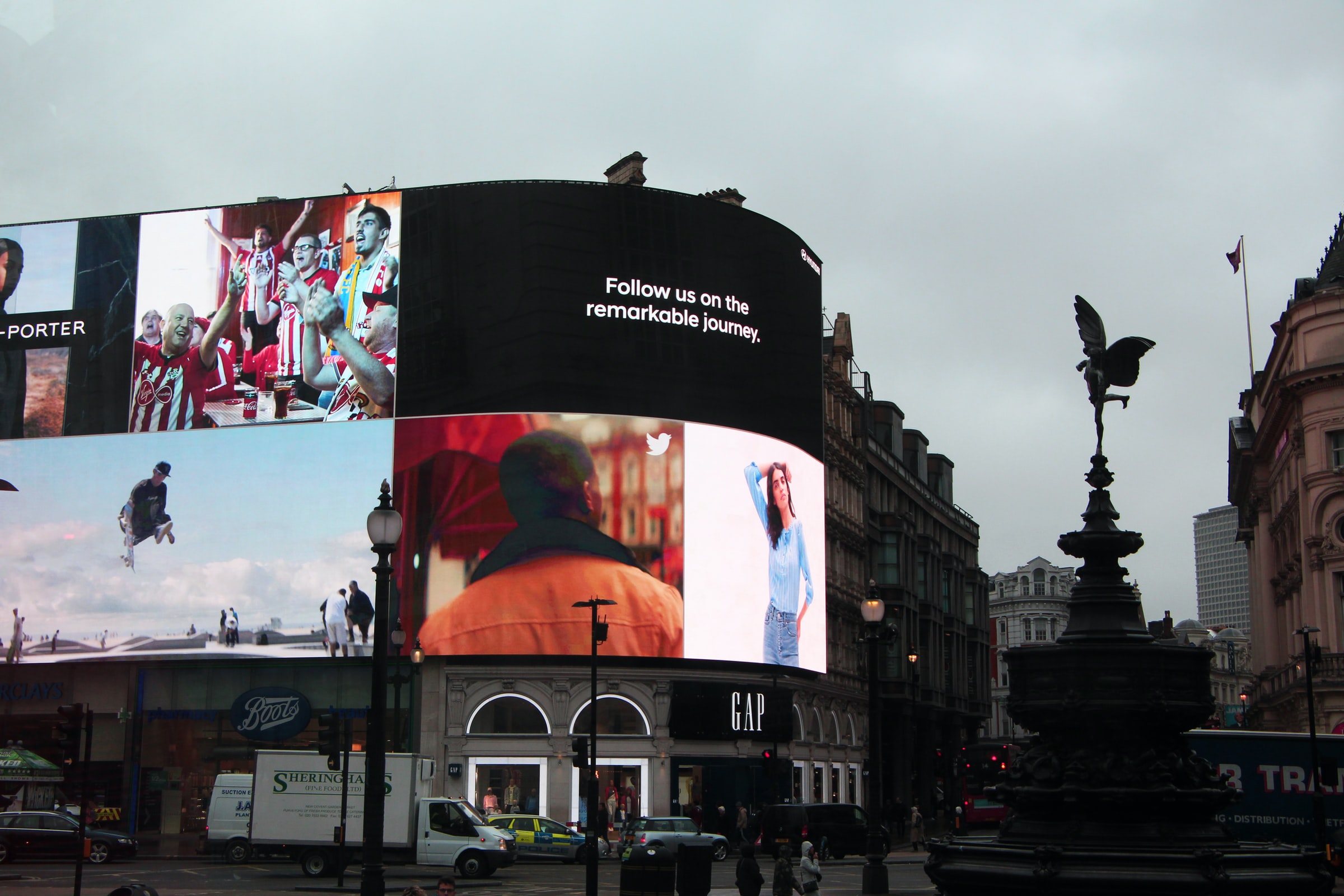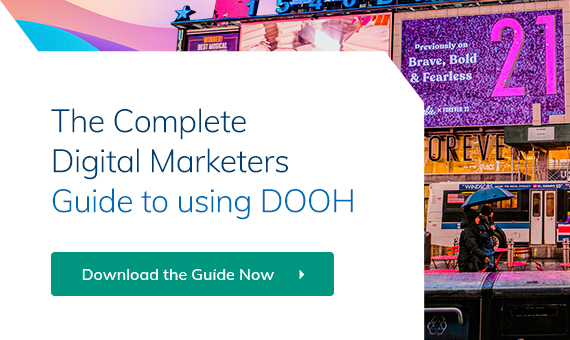At a time when every advertising campaign has to compete for the interest of consumers with diminishing attention spans and a growing distaste for intrusive online and mobile ads, SMBs and agencies can look to alternatives such as out of home or OOH advertising to grab the attention of their target audience.
Digital out of home retargeting will deliver the right message to the right audience at the right time as they look to convert interested prospects into actual buyers.
What Is Digital Out of Home (DOOH)?
Out of home or OOH advertising is a form of promotion that takes place on the street, or in public spaces outside your own residence. You might typically see an OOH ad displayed on a billboard, on street furniture such as benches and shelters, on or inside a moving vehicle, or at the checkout counter of a store.
The problem with traditional OOH media is that they are often static and may take considerable time and resources to put up and take down. Measuring the success of OOH campaigns can also be problematic, as there can be costly delays between putting up OOH media and getting the metrics back to understand the ad was received.
Digital Out of Home or DOOH advertising introduces the advantages of a higher level of technology and monitoring. In terms of display options, DOOH ads enable advertisers to use digital signage and digital displays with a direct connection to the internet. Logistically, this has the edge over traditional billboards, as digital ads can be altered or replaced instantaneously.
For this reason, DOOH campaigns can change displays and the design of DOOH media on the basis of target audience information such as location data, device IDs, the number of consumers exposed to a particular DOOH ad, together with other criteria. Integration with data analytics platforms enables advertisers to quickly and easily chart the success of DOOH campaigns and make adjustments in line with their offline and online retargeting efforts.
What Is Retargeting?
Conventional wisdom has it that around 97% of consumers exposed to digital ads, mobile ads, OOH ads, or whatever media a brand uses for its advertising campaign, will not make a purchase immediately after first encountering a particular product or service. To convince them to make that purchasing commitment, brands must engage in some kind of strategic follow-up activity.
Retargeting (also referred to as remarketing) is a strategy whereby advertisers focus on consumers who have already demonstrated an interest in a product or service by serving them specific content, promotions, or displays which are personalized and tailored to nudge them into making that crucial decision to buy.
Until recently, online channels provided the main source of retargeting opportunities for brands and advertisers – consumers who visit a website but leave without making a purchase get a remarketing cookie dropped on their browser, which is then used to display ads on other websites and social networks as the consumer continues to surf the web.
Today, however, online and mobile retargeting efforts can now be informed and complemented by offline exposure data generated by advertisers’ DOOH campaigns. The beauty of integrating DOOH advertising with mobile retargeting is that large, colorful, and eye-catching DOOH advertisements create a huge impact on consumers and are much more likely to stick in the memory. Using anonymized mobile location data, advertisers can now identify consumers that were exposed to a DOOH ad, and these same consumers can then be retargeted online or on mobile.
Using DOOH in this manner as a primer for mobile retargeting is proving to be highly effective. Research from Ocean in association with Neuro Insight finds that consumers are 48% more likely to click on a mobile ad after being exposed to (i.e., “primed by”) the same ad via a DOOH campaign than they are after being primed by a TV ad.

(Image source: oceanoutdoor.com)
As the authors of the study put it, “TV is immersive and involves a sedentary state in the home, just like magazine reading. DOOH involves a heightened response to communication seen out of home whilst on the go, just like mobile devices. The brain is very receptive to the power of context, and congruence plays a role in how we respond to things, just as we have seen in this study.”
How DOOH Retargeting Works – The Power of Programmatic
Powerful programmatic DOOH (pDOOH) buying platforms are the secret sauce behind retargeting efforts.
pDOOH platforms automate and simplify the process of buying ad space for digital out of home media, so that your ad only goes live when specified preset conditions are met. These conditions may be based on factors such as the time of day, weather conditions, location data, mobile data, or target audience demographics.
Read more: What Is Programmatic Digital Out of Home Advertising?
Once you’ve run your DOOH ad, anonymized mobile location data can be used to identify consumers who were exposed to it. Programmatic technology then comes into play again, this time for the purposes of buying online ad space to retarget the same users who saw the DOOH ad.
The result can be hugely powerful and expand an outdoor campaign’s reach right into the pockets of those it seeks to target. For example, as reported in Ad Exchanger, videoconferencing provider Zoom ran a DOOH retargeting campaign around neighborhoods in Denver. In a little over two months, the out-of-home campaign generated 18.5 million impressions, and Zoom was subsequentially able to deliver 120,000 retargeted ads across desktop and mobile to those who had been exposed to the ad.
“Think of out-of-home as a big canvas in the real world that helps prime consumers with a message,” says Jodi Senese in Ad Exchanger. Senese is the CMO of Outfront Media, which partners with GroundTruth to geofence locations and create behavioral audience segments. “If you can drive awareness at the top of the funnel and click-throughs and attribution at the bottom, that’s when brands really win.”
Anonymized Data
DOOH ads also minimize the impression of intrusion that traditional remarketing tactics have been known to inspire.
As a case in point, a KPMG poll of 2,000 Americans and 250 business executives found that 70% of firms have increased their collection of personal consumer information over the last year. The same poll also reveals that 86% of Americans have a growing concern over data privacy.

(Image source: kpmg.us)
With digital out of home campaigns, rather than gathering and storing highly sensitive personal data about individual consumers, ad targeting and retargeting are conducted via anonymous mobile location data to understand where certain demographics spend their time, together with their daily routines near to digital screens. These data privacy compliant methods don’t infringe on personal information.
Your Next Step
At The Neuron, we provide ad buyers with a platform that offers automated bidding and eliminates all the middlemen from the process, saving time, effort, and money for SMBs and agencies. As a result, you can upload and optimize your campaign in just a few simple steps, giving you complete flexibility and control over your DOOH ad campaigns, and your offline and online retargeting efforts.
To find out more about how The Neuron can help you use digital out of home retargeting, get in touch with us.


